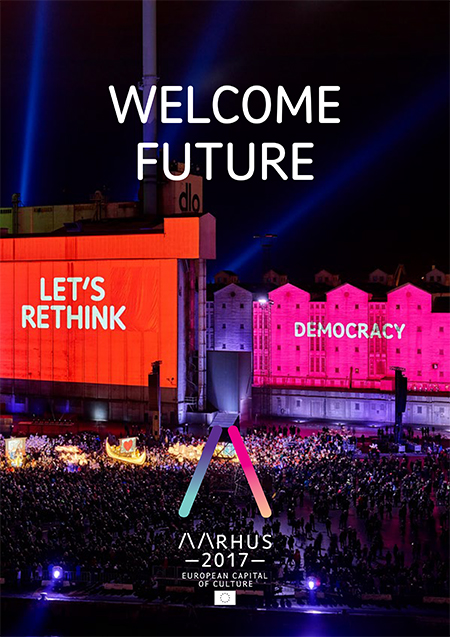Short-term impact of Aarhus 2017
Fantastic culture, millions of visitors, new jobs and a global profile: how the European Capital of Culture impacted in 2017.
As the European Capital of Culture in 2017, Aarhus and the Central Denmark knew that the prestigious accolade would put it on the map. Nonetheless, the cultural, social and economic benefits of Aarhus 2017 surpassed expectations, according to the official report into the impact of the title.
The report, ‘Welcome Future: Short-term impact of European Capital of Culture Aarhus 2017’, released on April 23, showed that Aarhus 2017 led to 442 creative collaborations, bringing together thousands of Danish and international artists. The ambitious cultural programme spurred tourism, with millions of visitors flocking into the region: overnight stays in the Central Denmark Region rose by 19% to a record high of 11.2 million in 2017. Businesses saw a 159.1 million Euro surge in turnover, with almost 2,000 new jobs created.
Aarhus 2017 CEO Rebecca Matthews said the results show how investment in culture can impact the bottom line.
“This is a strong message for the future. The hard data and the economics are, of course, important and we’re pleased our year has delivered on this. Equally so is how we managed to engage citizens, as audiences, participants and artists across Jutland and beyond,” she said.
“The seeds we have planted in our year as European Capital of Culture will continue to grow in the rich soil of the new collaborations and partnerships formed, the emboldened cultural organisations and creative workers, the vision shared among municipal councils, and the citizens energised by the cultural experience.”
Aarhus 2017 Foundation Chair, Mayor Jacob Bundsgaard, Aarhus, also welcomed the report, and said the city would continue with its cultural collaborations.
“Although Aarhus and the Central Denmark Region have undergone a remarkable development in recent decades, the European Capital of Culture has given us a tremendous boost that has also reverberated internationally. We are all keen to continue building on the momentum. Aarhus 2017 was only the beginning,” he said.
The European Capital of Culture is not just about the 12 months that the city holds the title, but also about the long-term legacy, so it can inspire similar projects in the future. Anders Kühnau, the Chairman of the Regional Council in Central Denmark Region, pledged to continue the regional partnerships.
“We did it! The report testifies the great outcomes of the European Capital of Culture in 2017. We managed to tie the region and 19 municipalities together. Culture will continue to lead the way, when our partnership continues as European Region of Culture,” he said.
Aarhus 2017 kicked off with a spectacular celebration on January 21, 2017, with more than 76,000 people in the streets of Aarhus and hundreds of thousands watching on television across Denmark. This was followed by an extravaganza of art and culture, ranging from large-scale dramas and art exhibitions to huge, popular events and projects on architecture, sustainability, gastronomy, food, sports and much more. Millions of people attended the events, and citizens finished the year prouder than ever of living in a city and a region offering such a rich cultural life.
Read the full publication by clicking the icon below (PDF opens in a new window):


